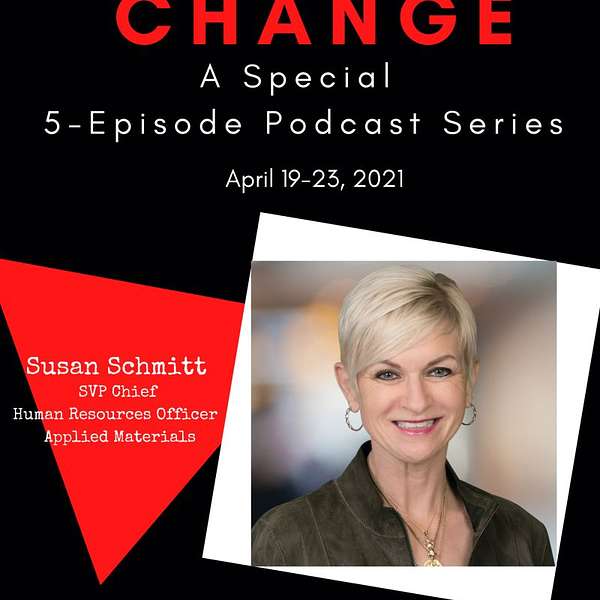
[Trauma-Informed] Leadership Uncensored
[Trauma-Informed] Leadership Uncensored
Season 2, Episode 10: Susan Schmitt Winchester. Healing at Work: A Guide to Using Career Conflicts to Overcome Your Past and Build the Future You Deserve
5-Part Special Series on Change
4th of 5 Podcasts on Change: Susan Schmitt Winchester is the Senior Vice President, Chief Human Resources Officer forApplied Materials, a Fortune 200 company, and its more than 24,000 global employees. She has more than 30 years of experience in HR providing executive leadership most recently at Rockwell Automation and the Kellogg Company. She continually looks to meet today’s global business challenges with creative HR strategies that engage people, support a dynamic, inclusive corporate culture, and enable company exceptional performance. Her passion is teaching and inspiring executives, leaders and professionals how to succeed by discovering greater self-acceptance, fulfillment and joy at work and in life.
Susan is also the author of the book, Healing at Work: A Guide to Using Career Conflicts to Overcome Your Past and Build the Future You Deserve, with Martha I. Finney (available in April 2021).
Susan is a fellow of the National Academy of Human Resources—the highest professional honor for leaders in HR. She serves as a Board member for the HR Policy Association (with membership of nearly 400 chief HR officers) and on the Executive Committee of the Peer Roundtable for CHROs (PRT). She is Vice Chair, Leadership Advisory Board to the Dean of Engineering, College of Engineering at the University of Michigan. And she is a member of the Forbes HR Council.
----
Businesses must constantly transform and adapt to meet a variety of challenges—from changes in technology, to the rise of new competitors, to a shift in laws, regulations, or underlying economic trends. Failure to do so could lead to loss of talent, stagnation or, worse, failure. Change has a starting point (current state) and an end point (future state) and right in the middle are people. Business sectors are still responding to the prolonged COVID crisis, which has impacted—and sometimes traumatized—each member of the workforce in unique ways. Countless stories of toxic work environments and people not being their “best selves” are surfacing in video blogs and HR complaints, to name a couple. Leading dynamic organizations through any type of change is difficult, and it’s even harder when employees are experiencing high levels of emotional distress inside and outside of the workplace.